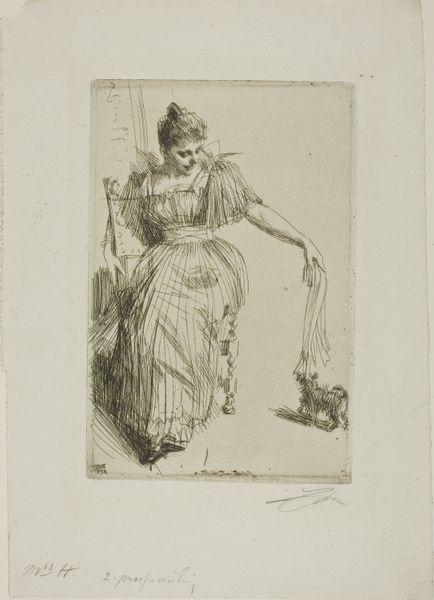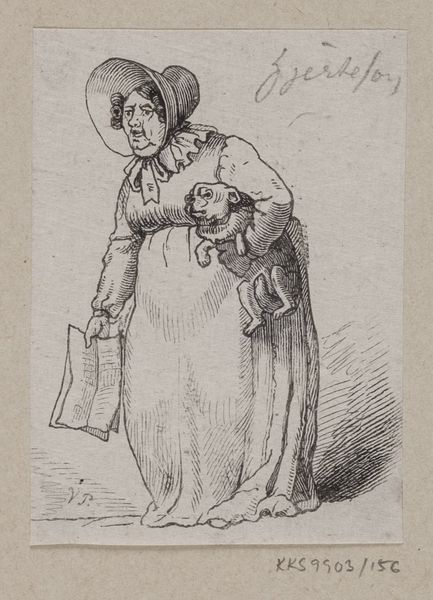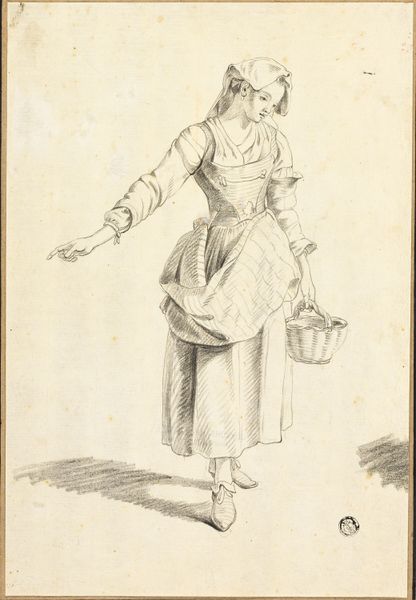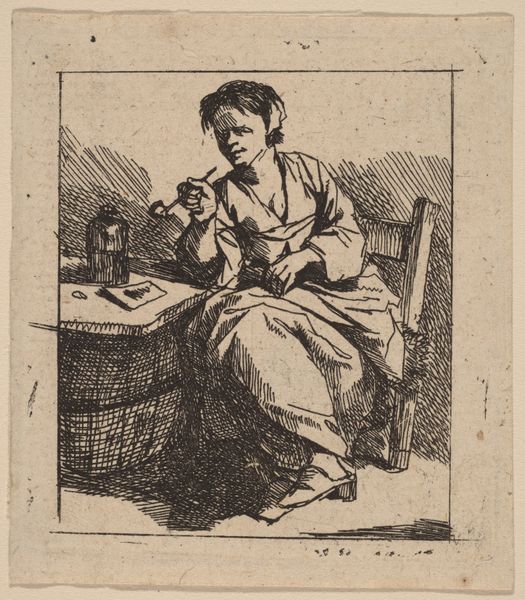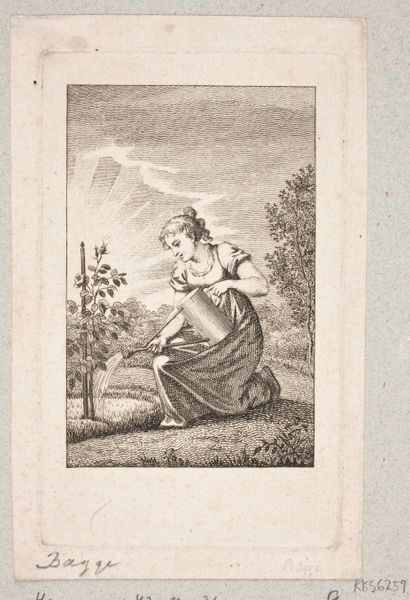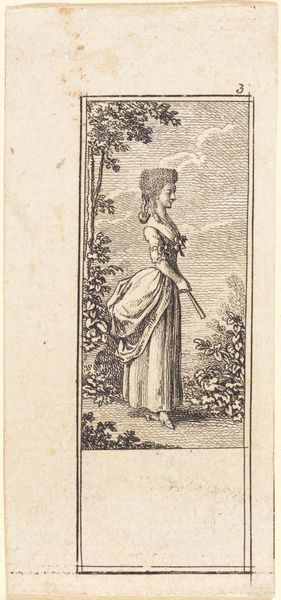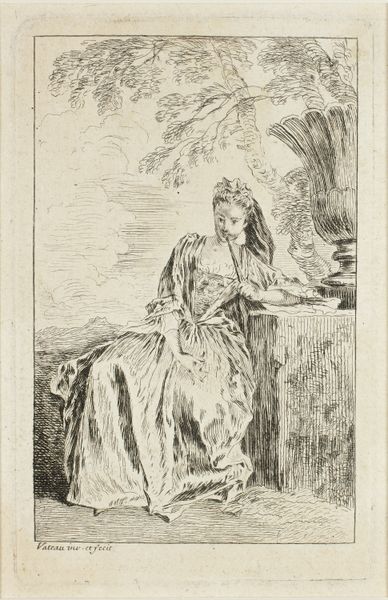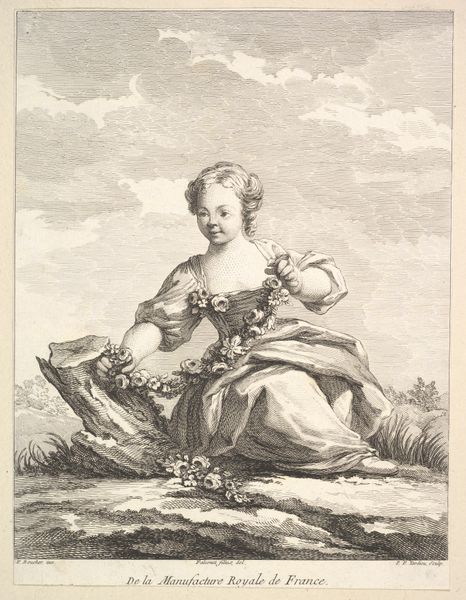
Queen (Neala from Canada), from "Court Game of Geography" 1838 - 1855
0:00
0:00
drawing, print, engraving
#
portrait
#
drawing
# print
#
figuration
#
genre-painting
#
engraving
Dimensions: 3 3/4 × 2 1/2 in. (9.5 × 6.4 cm)
Copyright: Public Domain
Curator: Here we have an engraving from around 1838-1855, made by William and Henry Rock. It is titled "Queen (Neala from Canada), from 'Court Game of Geography'." It’s part of the Met's collection. Editor: Well, my first thought is how tender and serene this image is. There's a quiet dignity in this figure holding a child, it feels intensely private amidst the slightly artificial looking setting. It's lovely and strange. Curator: What intrigues me most is the series it belongs to. "Court Game of Geography" sounds like an exploration of social hierarchies, but represented through, and maybe complicated by, geography. There’s labor and trade implied in that basket. I’m curious about its place in a game. Editor: Right, that makes it immediately unsettling. The composition positions this Indigenous mother in Canada as almost...a playing card, and commodifies both the representation and the individual through a colonially-infused lens of resource. Even the landscape is ornamental. It’s gorgeous but deeply unsettling to frame it as "leisure". Curator: Indeed. This type of printing – engraving – involved careful tooling of a metal plate, from which many identical prints could be made, but also easily dispersed and sold. The labor involved is substantial and allows for complex narratives, but here also reveals problematic power dynamics. That one spear card symbol in the top-left hints at so many narratives as well. Editor: Yes, there's a tension in seeing a beautiful handmade thing be involved with less beautiful themes of domination and commercialisation. It forces us to ask "what kind of product is beauty?". That mother seems weighted by what that simple engraved card also represents. Curator: Exactly! It reflects on the mechanisms through which images themselves became commodities. Let's not forget the purpose for which the image was made: to both inform, entertain, and likely perpetuate, certain social constructs, and colonial trade relations with a specific perspective towards Indigenous populations. Editor: This piece invites a profound moment of consideration regarding the intertwined nature of material production, artistic interpretation, and their combined role in reinforcing, but also potentially unraveling dominant ideologies, and really just showing that any single object is more complex that what may appear to be initially. Curator: Absolutely. Analyzing it from this standpoint provides invaluable insight into those complexities as well, beyond aesthetics.
Comments
No comments
Be the first to comment and join the conversation on the ultimate creative platform.
